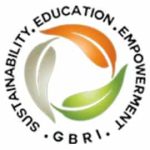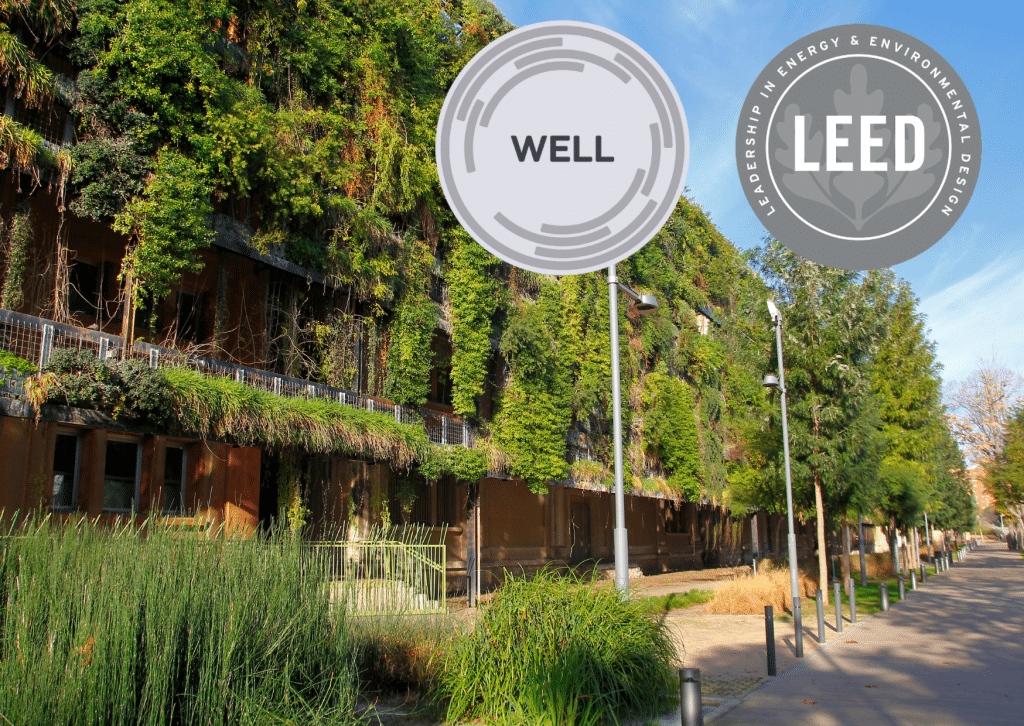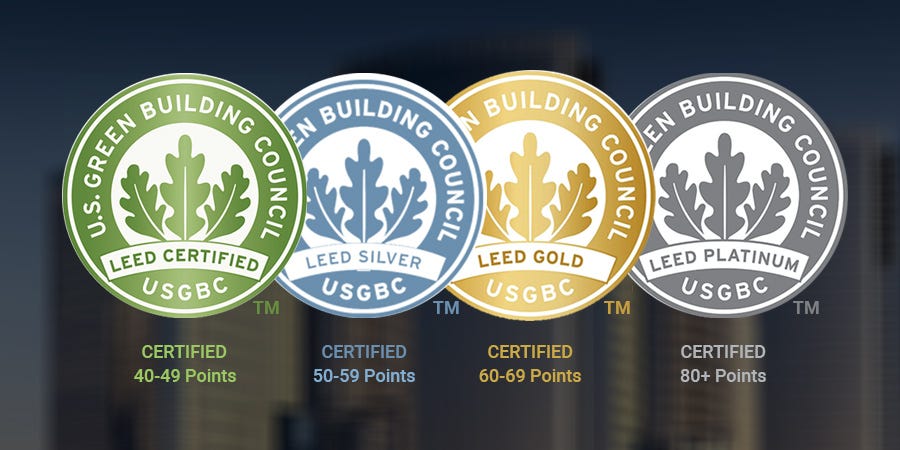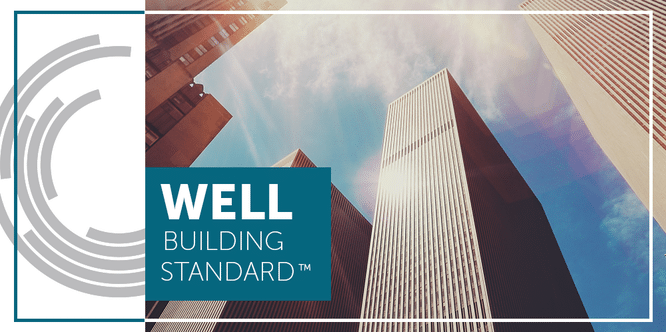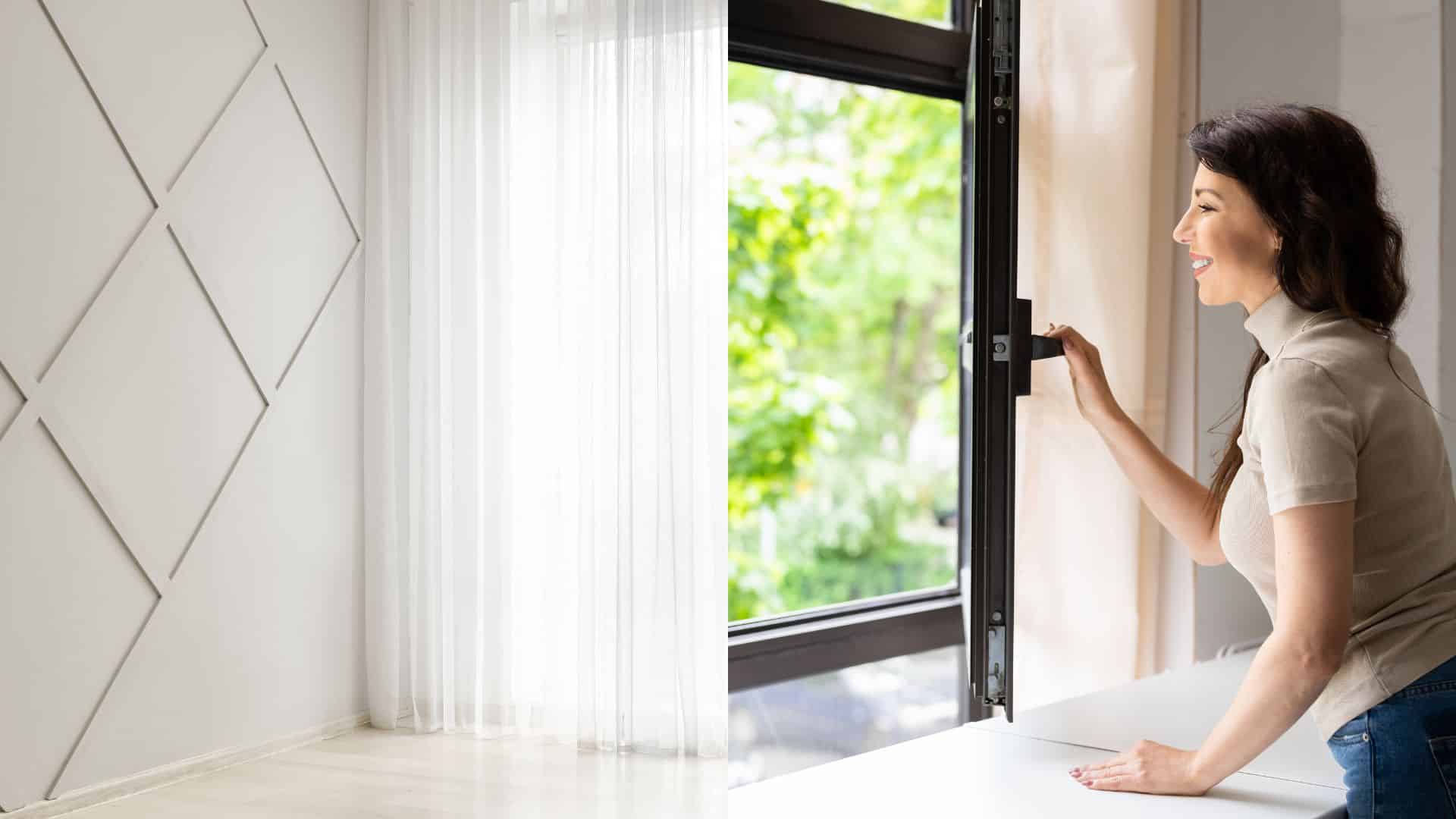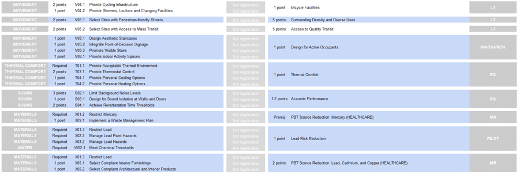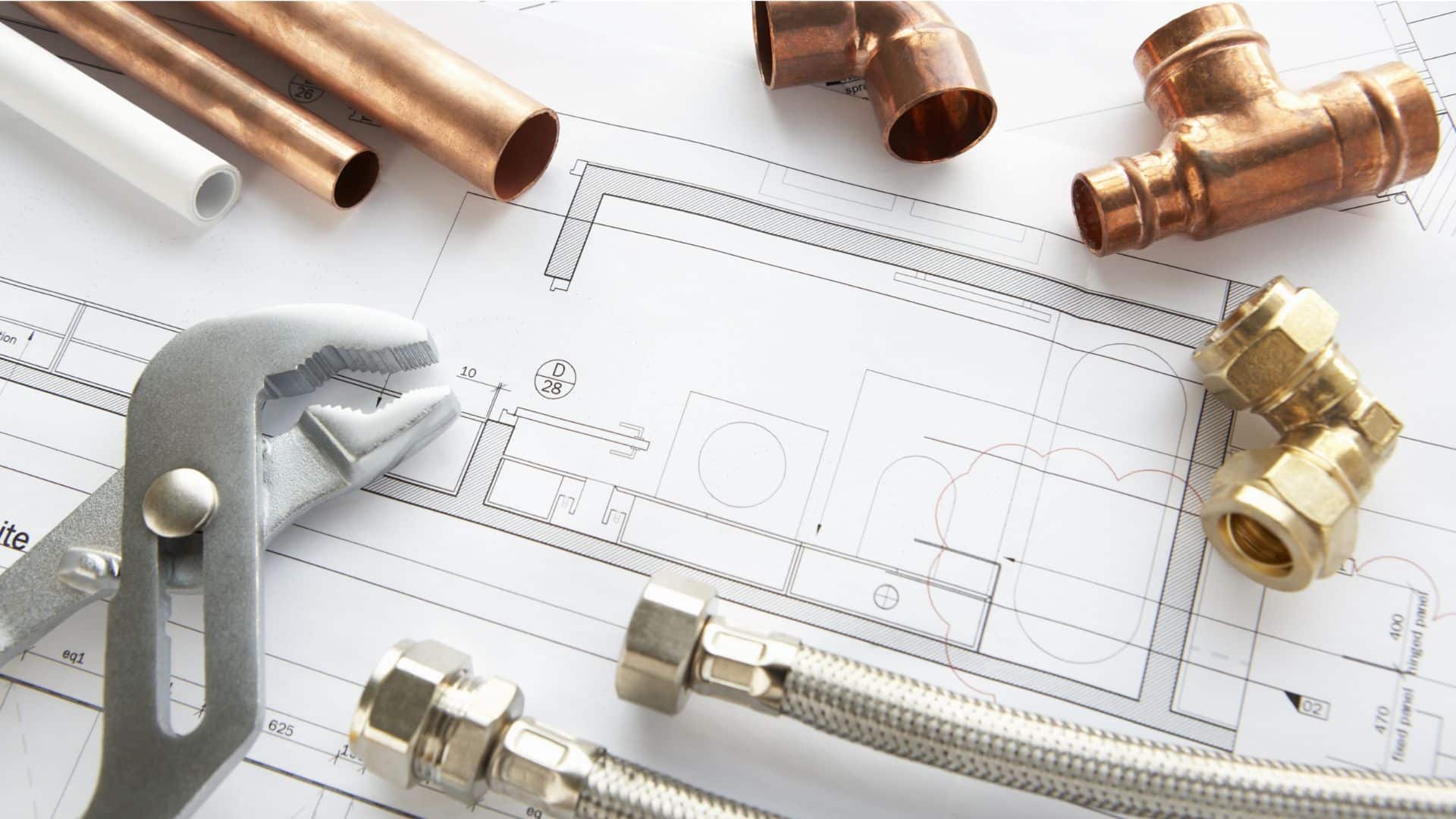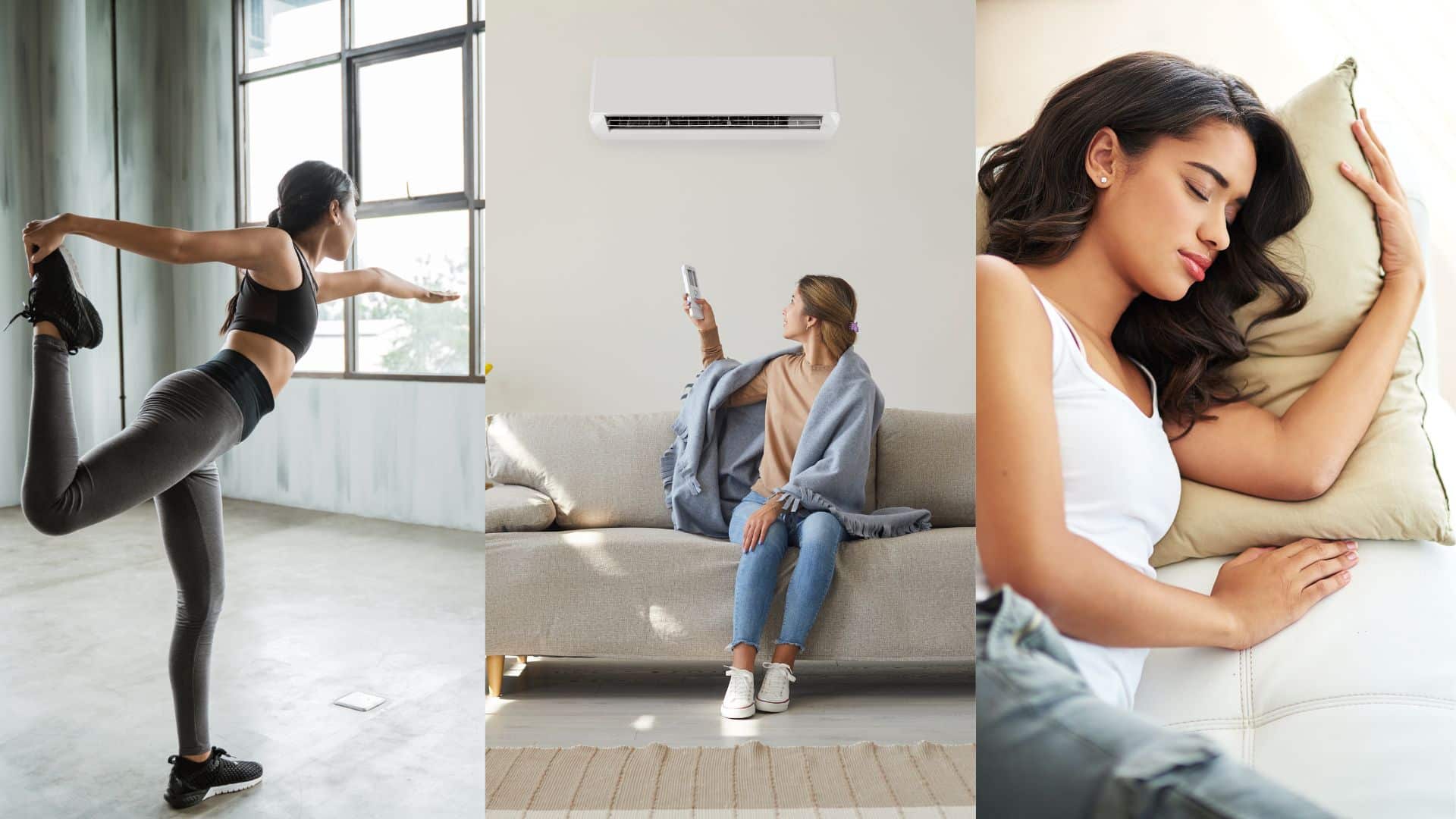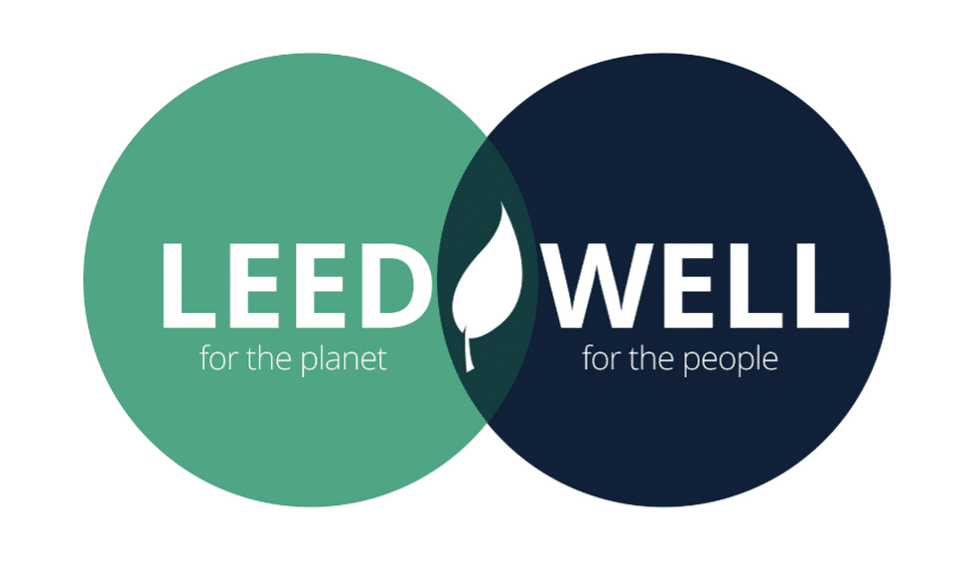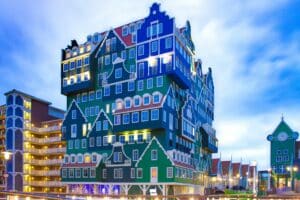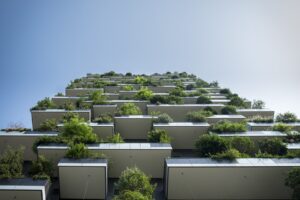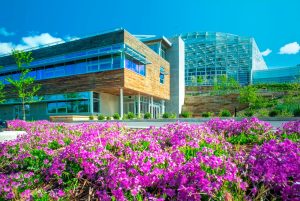By Smera Sera Oommen
In an era marked by increasing environmental consciousness and the recognition of the profound impact of buildings on our planet, green building rating systems have emerged as transformative tools in the world of architecture, construction, and design. Their significance extends far beyond mere certification; they represent a powerful paradigm shift toward sustainable and responsible building practices.
In the pursuit of sustainable and healthier built environments, two prominent rating systems have emerged as cornerstones of modern architectural and interior design: Leadership in Energy and Environmental Design (LEED) and the WELL Building Standard. While these systems have distinct focuses – one on environmental sustainability and the other on human health and well-being – their convergence has given rise to a powerful synergy that is shaping the future of sustainable building practices.Discover the intersection of LEED and WELL Rating Systems and how they shape the future of sustainable architecture. Explore the benefits, challenges, and future directions of integrating these systems for healthier, more environmentally responsible buildings.
Understanding LEED and WELL:
- Leadership in Energy and Environmental Design (LEED):
LEED, developed by the U.S. Green Building Council (USGBC), is one of the most widely recognized and used green building certification programs globally. It primarily assesses a building’s environmental performance and resource efficiency across various criteria, including sustainable site development, water savings, energy efficiency, materials selection, and indoor environmental quality.
- WELL Building Standard:
The WELL Building Standard, launched by the International WELL Building Institute (IWBI), is a performance-based system that focuses on human health and well-being in the built environment. It encompasses a comprehensive set of categories, ranging from air, water, and nourishment to light, fitness, and mind, aiming to optimize the impact of the built environment on occupants’ health and comfort.
The Convergence of LEED and WELL:
The overlap between LEED and WELL is becoming increasingly apparent, and this intersection holds several benefits for the design and construction industry, building occupants, and the environment.
- Holistic Approach:
LEED and WELL were initially developed with distinct objectives, but they share an overarching goal of improving the overall quality of buildings. By integrating aspects of both systems, designers and developers can create spaces that are environmentally sustainable and also promote human well-being, leading to truly holistic projects.
- Indoor Environmental Quality (IEQ):
Both rating systems place a strong emphasis on indoor environmental quality, albeit from different angles. LEED addresses IEQ through measures such as indoor air quality and acoustics, which also align with many of WELL’s categories. This convergence encourages the design and implementation of features like proper ventilation, low VOC materials, and noise reduction, ultimately enhancing the indoor experience.
- Synergistic Categories:
Some categories within LEED and WELL inherently complement each other. For instance, the “Water” category in LEED encourages efficient water use, which aligns with WELL’s emphasis on providing clean and accessible water sources. Similarly, the “Materials and Resources” category in LEED encourages the use of sustainable materials, which can positively impact indoor air quality, a key aspect of WELL’s “Air” category.
- Health and Productivity:
While LEED primarily addresses environmental sustainability, there is a growing recognition that green buildings can have positive effects on occupant health and productivity. Integrating WELL principles into LEED-certified projects can amplify these effects by focusing on aspects like daylight provision, biophilic design, and spaces that promote physical activity and mental well-being.
- Certification Synergy:
Project teams pursuing both LEED and WELL certification can benefit from synergies that streamline the certification process. Efforts invested in achieving one certification may contribute to fulfilling requirements of the other, reducing duplication of work and potentially lowering costs.
Synergetic credits of LEED and WELL:
In the checklist provided below, we can discern the interconnection between each WELL credit and its corresponding LEED credit. Gaining insights into the shared purpose and the resemblances in the documentation prerequisites can greatly facilitate the smoother progression of the certification process for both standards.
Indoor Air Quality (IAQ):
LEED: LEED credits related to indoor air quality focus on factors such as ventilation rates, air filtration, and the use of low-emitting materials. These align seamlessly with WELL’s emphasis on IAQ.
WELL: WELL’s air quality standards dovetail with LEED’s IAQ credits by promoting practices like proper ventilation, the use of low VOC materials, and air quality testing, ensuring healthier indoor environments.
Lighting:
LEED: LEED encourages the use of energy-efficient lighting and daylighting strategies, which directly impact occupant comfort and well-being.
WELL: WELL places a strong emphasis on lighting quality, promoting access to natural light and circadian lighting design. These principles align with LEED’s goals of energy-efficient lighting while also considering the impact on occupant health.
Materials and Resources:
LEED: LEED credits in this category focus on sustainable material selection and waste reduction, contributing to environmental responsibility.
WELL: WELL complements LEED by encouraging materials that positively impact indoor air quality. The use of low-emitting materials, sustainable sourcing, and material transparency are shared objectives.
Water Efficiency:
LEED: LEED emphasizes water conservation through measures like efficient fixtures and landscaping practices, aligning with WELL’s goal of providing safe and accessible water sources.
WELL: By ensuring access to clean drinking water, WELL contributes to LEED’s water efficiency goals by promoting responsible water usage and minimizing waste.
Thermal Comfort:
LEED: LEED considers thermal comfort as part of its indoor environmental quality credits, encouraging temperature and humidity control.
WELL: WELL builds upon this by establishing more detailed criteria for thermal comfort, addressing factors like humidity levels, radiant heating, and thermal zoning.
Challenges and Future Directions:
While the convergence of LEED and WELL brings numerous benefits, challenges remain. Integrating the two systems requires a deep understanding of their criteria and a collaborative approach from various stakeholders. Additionally, projects must balance sometimes competing objectives to ensure that both sustainability and human health goals are met without compromise.
As the green building landscape evolves, it is conceivable that LEED and WELL will continue to converge even further. This could involve the development of joint certification tracks, further alignment of criteria, and enhanced tools to guide professionals in effectively combining the systems.
Conclusion:
The intersection of the LEED and WELL rating systems marks an exciting juncture in the world of sustainable design and construction. As the built environment becomes more focused on both environmental responsibility and human well-being, the integration of these two influential systems promises a future where buildings are not only energy-efficient and resource-conscious but also foster healthier and more productive lives for their occupants. It is at this crossroads that architects, designers, and developers can truly shape a more sustainable and livable world.
Enjoyed reading this article? If you are considering earning a LEED Green Associate, LEED AP BD+C, LEED AP O+M or a WELL AP Credential – explore GBRI’s best-in-class exam prep packages. Looking for WELL v2 case studies – you are in luck, we have 5 WELL Case Study courses. Need CE hours for your LEED or WELL Credentials – explore our curated LEED, WELL and AIA bundles approved by USGBC and AIA.
- Did you find this article informative? If you’re interested in obtaining a LEED Green Associate, LEED AP BD+C, LEED AP O+M, or a WELL AP Credential, explore GBRI’s top-notch exam preparation packages.
- Searching for WELL v2 case studies? You’re in luck! We offer five comprehensive WELL Case Study courses.
- Need more continuing education (CE) hours for your LEED or WELL Credentials? Discover our curated bundles of LEED, WELL, and AIA courses, all approved by USGBC and AIA.
